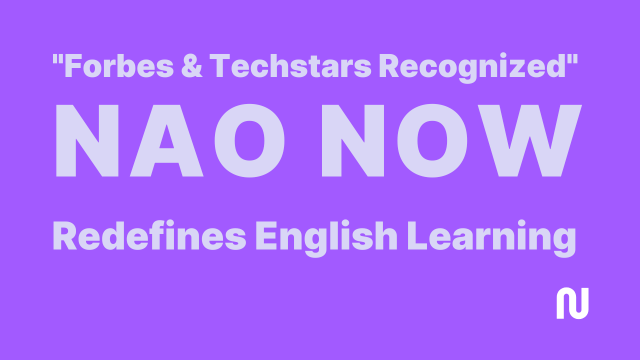The Ultimate Guide to Elementary English Vocabulary Learning: 3 Proven Methods to Help Kids Speak, Not Just Memorize







Why Most Parents Struggle With Vocabulary Learning
If you're a parent of an elementary school child, you've likely wondered how to help your child master English vocabulary. Your child may spend hours memorizing words—yet when it’s time to speak, the words just won’t come out.
It might be time to rethink the learning method.
In this article, we’ll walk you through effective, age-appropriate strategies to help your child not only remember English words—but actually use them in real conversations.
The Problem With Traditional Vocabulary Learning
Most students rely on old-school memorization methods like:
- Writing each word 5–10 times
- Memorizing Korean definitions and doing spelling tests
- Using word lists without images or context
- Preparing for daily word quizzes
These methods may help in the short term—but they don’t lead to real, functional vocabulary use.
Why These Methods Fall Short:
“Knowing a word doesn’t mean you can use it. Vocabulary needs to be experienced and applied to become part of your real language.”
- ❌ Weak long-term memory: Rote learning fades fast
- ❌ Low usage ability: Knowing ≠ speaking
- ❌ Boring routines: Repetition kills motivation
- ❌ Lack of context: No connection to real-life use
Age-Appropriate Learning Methods for Elementary Students
To make vocabulary stick, learning must match a child’s cognitive development. Here's how:
🐣 Lower Grades (1st–2nd Grade): Sensory-Based Learning
Young learners absorb language best through visuals and play.
Recommended methods:
- Picture cards and flashcards
- Songs and movement-based repetition
- Coloring, stickers, and craft-based word activities
- Repeating the same words in various fun formats
Key Point: At this age, exposure and enjoyment are more important than formal meaning.
📚 Mid Grades (3rd–4th Grade): Meaningful Connection Stage
Students begin to understand how words relate to ideas.
Recommended methods:
- Making simple sentences with new words
- Thematic learning (e.g., food, animals, family)
- Finding words in stories, cartoons, or shows
- Writing short journals using new vocabulary
How Nao Now Does It:
For example, in a lesson on animals, students don’t just learn names. They describe them:
“This animal is fast and lives in Africa.”
Key Point: Children must experience words in context.
🧠 Upper Grades (5th–6th Grade): Real-Life Application
By now, students know many words—but need to learn how to use them fluently.
Recommended methods:
- Role-play and structured debate
- Analyzing English news or YouTube content
- Real-life speaking missions with friends and family
- Creative writing and presentations
How Nao Now Does It:
Older students take part in project-based learning. For example, a unit on environmental protection might include research and presentations using words like “pollution,” “renewable,” and “sustainable.”
Key Point: Expressing personal opinions using new words builds real fluency and confidence.
Top 3 Proven Vocabulary Learning Methods
✅ 1. Learning Through Play and Experiences
Vocabulary should feel like play—not work.
At Nao Now, every class is designed around interactive activities that let kids learn by doing.
Examples:
- Slime-making class: Learn words like mix, stretch, sticky
- Pancake-making class: Use words like flip, pour, sweet
- Dinosaur adventure class: Discover words like huge, ancient, fossil
Kids focus on play—and end up speaking English without even realizing it.
✅ 2. Multisensory Learning That Activates All Senses
Nao Now lessons go beyond seeing and hearing. Kids touch, move, draw, and create—anchoring vocabulary in real experiences.
Unique Activities at Nao Now:
- Art class: Learn pattern, shape, texture by drawing and exploring
- Science experiments: Words like bubble, dissolve, react come alive
- Ocean creatures unit: Learn underwater, marine, coral using real photos and videos
These lessons naturally flow from understanding → speaking → applying.
✅ 3. Real-Time 1:1 Speaking Practice
Words only stick when they’re spoken.
Nao Now’s biggest strength is live 1-on-1 lessons with native English-speaking mentors.
How It Works:
- Mentors ask natural questions using new words
- Kids create their own sentences in real time
- Feedback is gentle, encouraging, and confidence-building
For example, after learning “strong,” mentors might ask:
“What is the strongest thing in your house?”
This links the vocabulary to real thoughts.
Words learned this way stick longer—and become part of a child’s active vocabulary.
Practical Vocabulary Success Checklist
✅ Use age-appropriate learning methods
✅ Blend learning with fun activities
✅ Provide varied usage opportunities
✅ Practice in real-life situations
✅ Offer encouragement and build confidence
What Parents Are Seeing with Nao Now
Hundreds of kids have transformed their English skills with Nao Now:
✨ Speak naturally in everyday situations
✨ Enjoy learning instead of avoiding it
✨ Gain confidence through personalized support
✨ Remember words longer because they’re tied to experience
Things to Keep in Mind
❗ Age-inappropriate methods reduce interest
❗ Don’t focus on memorization—focus on usage
❗ Respect your child’s pace and celebrate progress
Teach Words That Speak—Not Just Words to Remember
Effective vocabulary learning is not about memorizing lists. It’s about transforming words into language.
At Nao Now, we believe:
“Words should not be memorized—they should be lived and spoken.”
Instead of giving your child a vocabulary list, let them experience a class that helps them speak their thoughts in English.
Try It Free
👉 Book your free 25-minute trial lesson today and see the difference.
Nao Now – Where English words come to life.
Not memorized. Spoken.



.png)





.png)
.png)
.png)

.png)